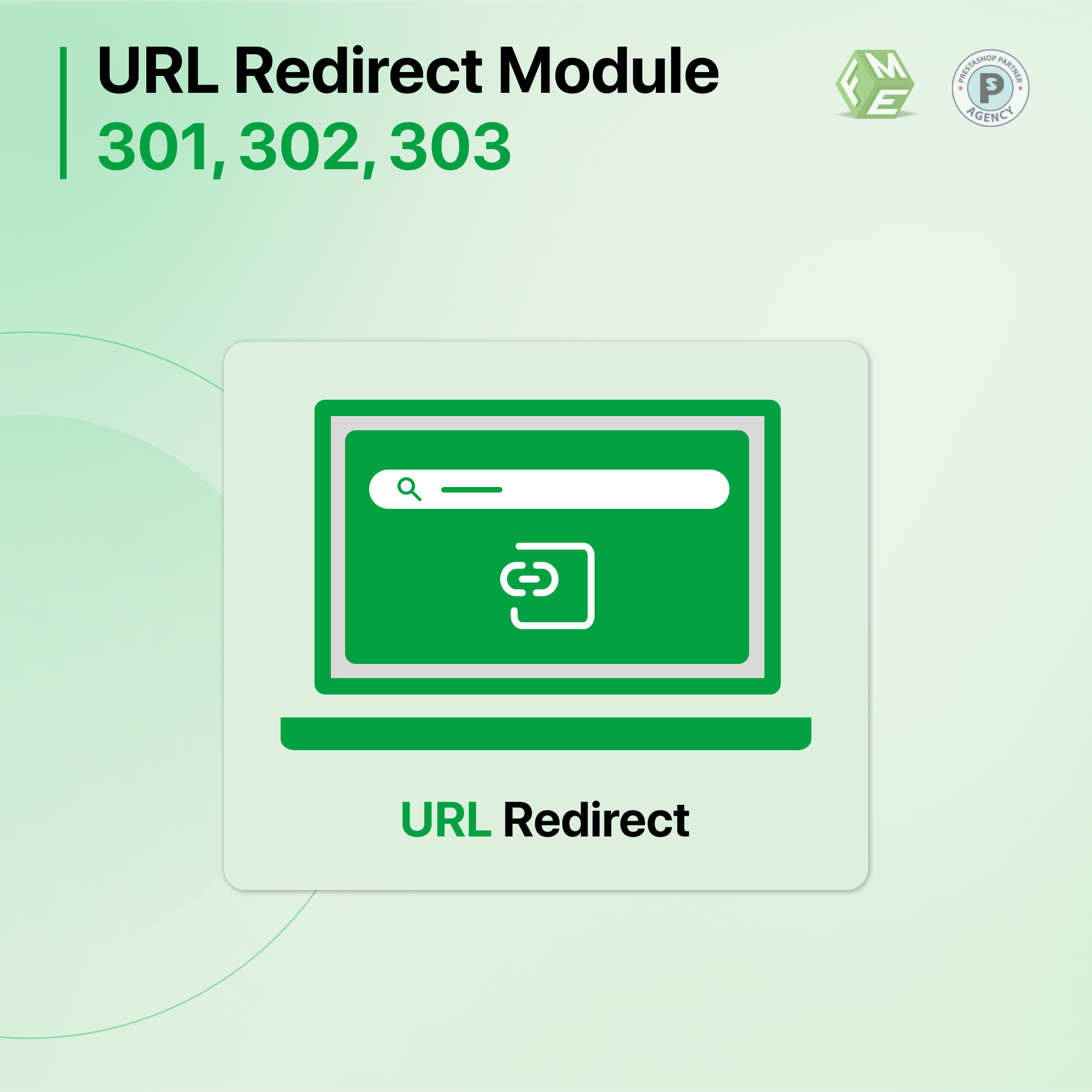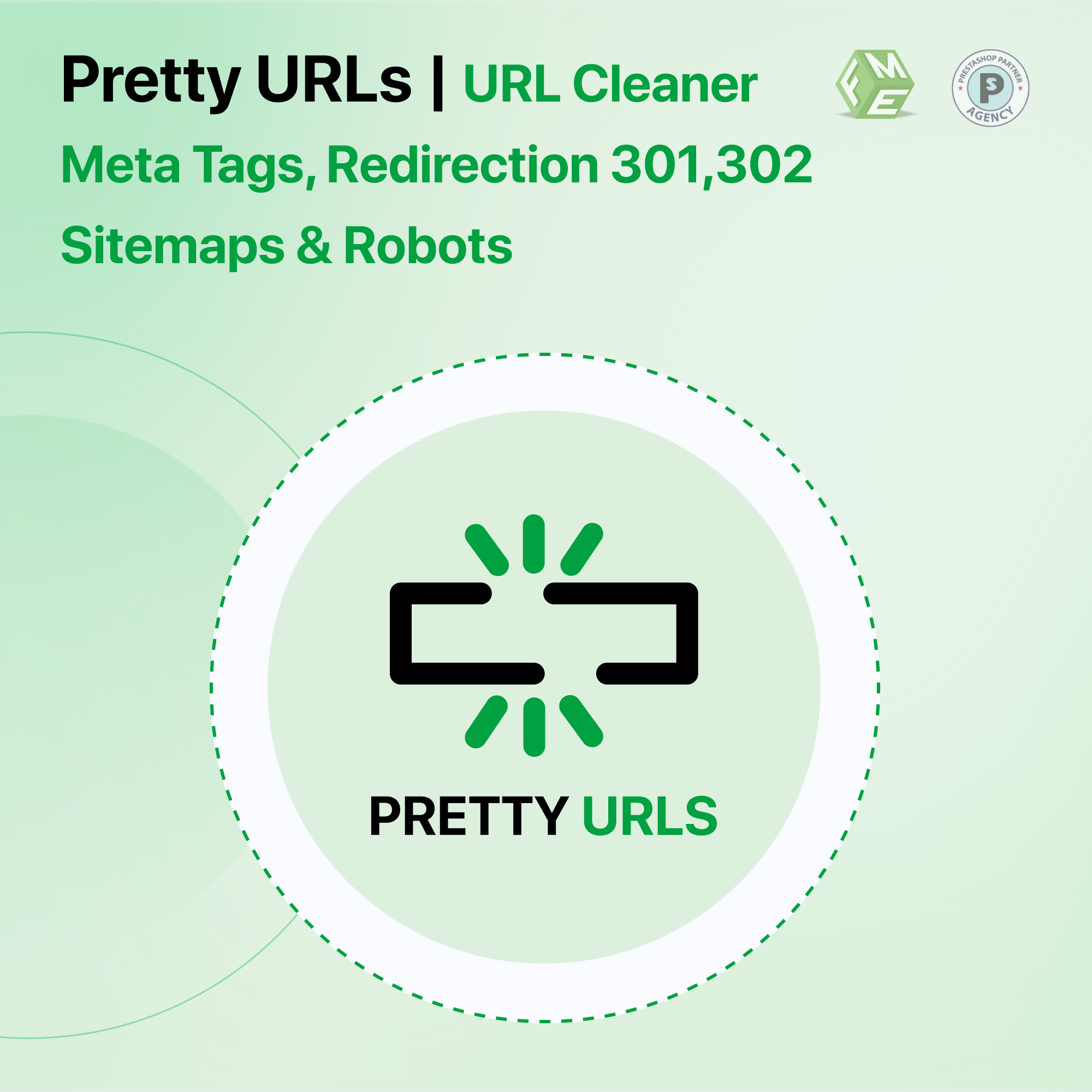Best Practices for PrestaShop Redirects: A Guide with FME Modules

Posted On: Jul 3, 2024
Categories: PrestaShop SEO Best Practices: Guides, Checklists & Tips
If you want to excel in this fast-paced e-commerce world, you have to ensure a smooth user experience. One of the key components of a smooth online shopping experience is the proper management of redirects.
Redirects are essential for ensuring that visitors reach the right pages, even if the URLs have changed or if there are issues with the original links.
In this detailed guide, we'll explore the best practices for implementing redirects in PrestaShop, with a focus on the FME Modules PrestaShop Redirect extension.
Why Redirects Matter in E-commerce?
Before we delve into how, we must address the elephant in the room, i.e why do redirects matter?
Redirects play a vital role in the following scenarios:
Changing URLs: Whether it's due to a rebranding effort, site migration, or just a reorganization of your product categories, changing URLs can disrupt the user experience if not handled correctly.
Broken Links: Links can break for various reasons, such as deleted products, removed categories, or typos. Redirects ensure that users don't hit a dead end.
SEO Optimization: Properly managed redirects help maintain your site's SEO health by preserving link equity and avoiding duplicate content penalties.
Types of Redirects
Understanding the different types of redirects is the first step for implementing them effectively:
1. 301 Redirect (Permanent): This is used when a page has permanently moved to a new location. It signals to search engines that the original URL should be replaced with the new one in their index.
2. 302 Redirect (Temporary): This indicates that a page has temporarily moved. It's useful when you're making temporary changes, like during a sale or a seasonal promotion.
3. 307 Redirect: Similar to a 302 redirect but ensures that the HTTP method remains unchanged (e.g., POST requests).
4. Meta Refresh: A client-side redirect that instructs the browser to refresh the page after a certain number of seconds. It's less common and not recommended for SEO purposes.
Best Practices for Implementing PrestaShop Redirects
We have, in our pocket, the top 6 strategies to implement Prestashop Redirects, and we’ll discuss it one at a time.
1. Plan Your Redirect Strategy
Before implementing any redirects, it's essential to have a clear strategy. This involves:
Mapping Old URLs to New URLs: Create a comprehensive list of old URLs and their corresponding new URLs. This can be done manually or using tools like Screaming Frog.
Categorizing Redirects: Determine whether each redirect should be permanent (301) or temporary (302).
2. Use a Reliable Redirect Extension
Using a dedicated redirect extension can simplify the process and ensure accuracy. The FME Modules PrestaShop Redirect extension is a powerful tool that offers several features to streamline redirect management:
Bulk URL Redirects: Allows you to upload a CSV file with multiple redirects, saving time and reducing errors.
404 Error Management: Automatically detects and logs 404 errors, enabling you to quickly set up redirects for broken links.
SEO-Friendly: Supports 301 and 302 redirects, ensuring that your SEO efforts are not compromised.
3. Monitor and Manage 404 Errors
404 errors can significantly impact user experience and SEO. The FME Modules PrestaShop Redirect extension helps you stay on top of these errors by:
Automatic Detection: Logs 404 errors in real-time, allowing you to address them promptly.
Reporting: Provides detailed reports on 404 errors, including the URLs that caused them and the number of times they occurred.
4. Regularly Update and Audit Redirects
Redirects are not a set-it-and-forget-it task. Regularly audit your redirects to ensure they are still necessary and correctly implemented. This involves:
Checking for Redirect Chains: Ensure that there are no multiple hops between redirects, as this can slow down page load times and negatively impact SEO.
Removing Unnecessary Redirects: Over time, some redirects may no longer be needed. Removing them can improve site performance.
5. Optimize for SEO
Properly managed redirects can help maintain and even improve your SEO rankings. To optimize redirects for SEO:
Use 301 Redirects for Permanent Changes: This helps transfer link equity from the old URL to the new one.
Avoid Redirect Loops: Ensure that redirects do not point back to themselves or create an infinite loop.
Update Internal Links: Whenever possible, update internal links to point directly to the new URL instead of relying on redirects.
6. Test Redirects Thoroughly
Before making redirects live, thoroughly test them to ensure they work as intended. This includes:
Testing Different Scenarios: Check redirects for various scenarios, such as different browsers, devices, and user agents.
Using Tools: Utilize tools like Redirect Path, Screaming Frog, or the FME Modules PrestaShop Redirect extension's testing features to verify the redirects.
Implementing Redirects with FME Modules PrestaShop Redirect Extension
Now that we've covered the best practices, let's dive into how you can implement these using the FME Modules PrestaShop Redirect url extension.
Step 1: Install and Configure the Extension
Installation: Download and install the FME Modules PrestaShop Redirect extension from the PrestaShop Addons Marketplace.
Configuration: Navigate to the module's settings and configure the basic options, such as enabling 404 error logging and choosing the default redirect type (301 or 302).
Step 2: Set Up Individual Redirects
Manual Entry: For individual redirects, go to the module's interface and enter the old URL, the new URL, and select the redirect type.
Bulk Upload: For multiple redirects, prepare a CSV file with the old URLs, new URLs, and redirect types, then upload it through the module's bulk upload feature.
Step 3: Monitor 404 Errors
Error Log: Regularly check the 404 error log in the module to identify and address broken links.
Automatic Redirects: Set up automatic redirects for frequently occurring 404 errors directly from the error log.
Step 4: Regular Audits and Updates
Audit Reports: Use the module's reporting features to conduct regular audits of your redirects.
Update Redirects: Make necessary updates or remove obsolete redirects based on the audit findings.
Conclusion
Implementing redirects in PrestaShop is a very important task for maintaining a smooth user experience as well as in preserving your SEO efforts. By following the best practices, discussed earlier and leveraging powerful tools like the FME Modules PrestaShop Redirect extension, you can efficiently manage redirects and ensure that your e-commerce site remains user-friendly and SEO-compliant.
Regular monitoring, thorough testing, and strategic planning are key to effective redirect management. It will help you keep your site optimized and your customers satisfied.
By incorporating these best practices, you can easily move through the complexities of URL management and improve the overall performance of your PrestaShop store.










